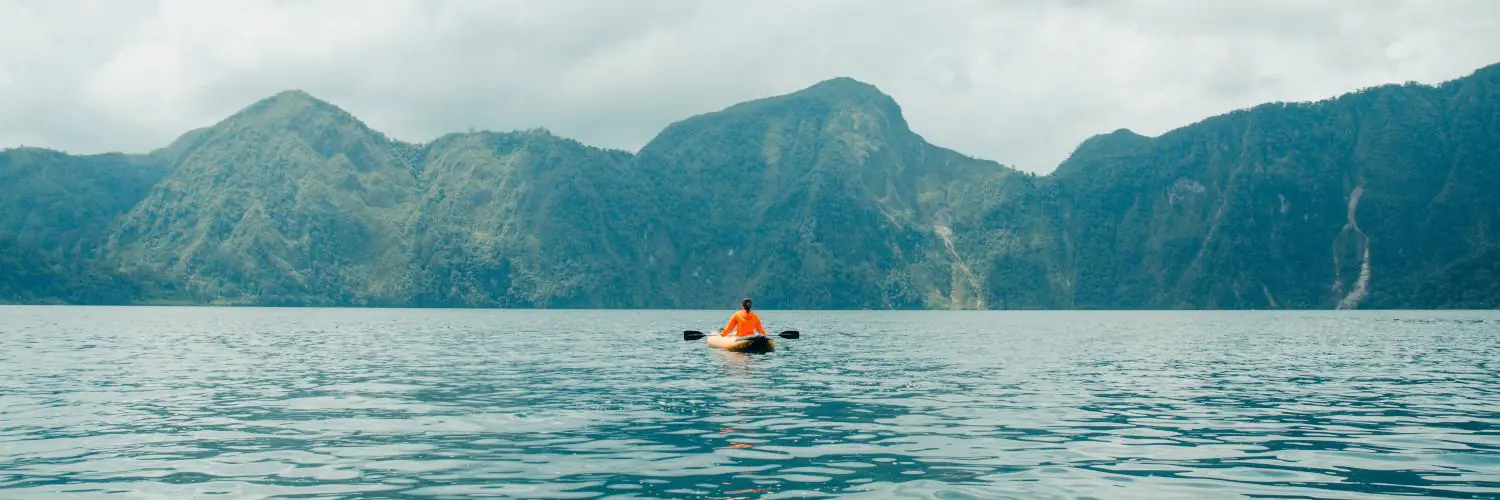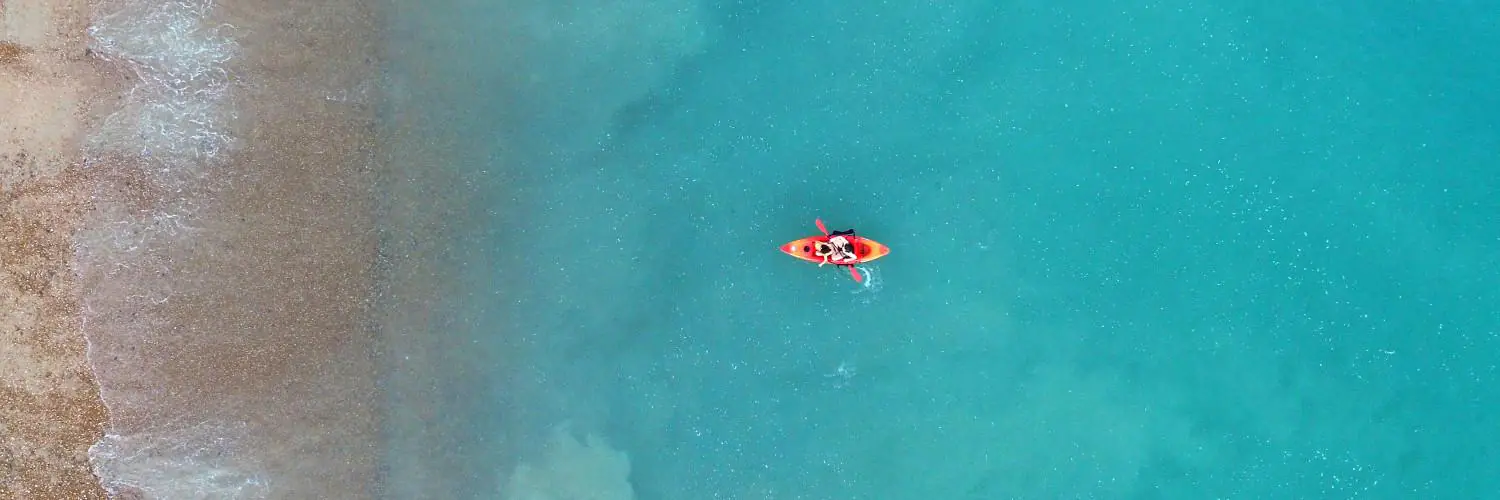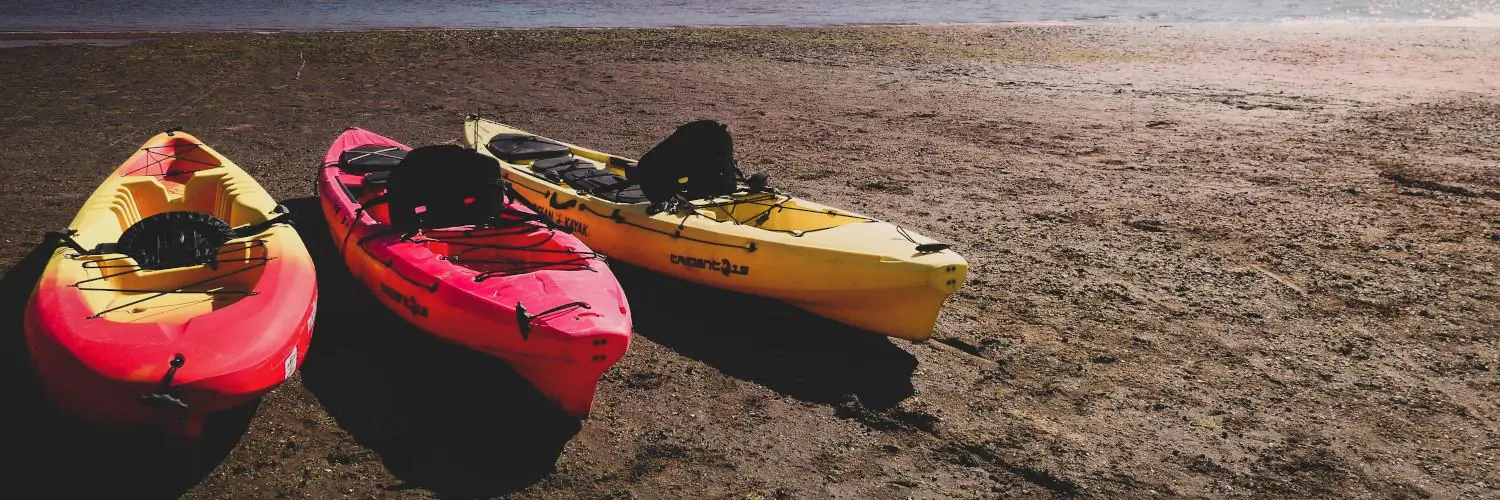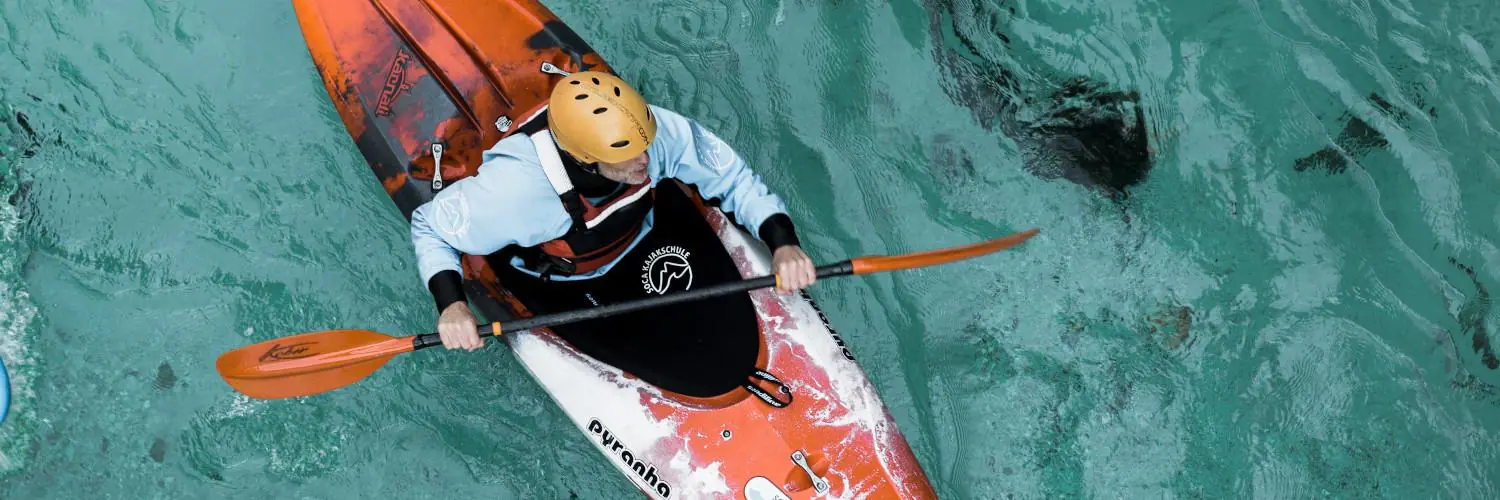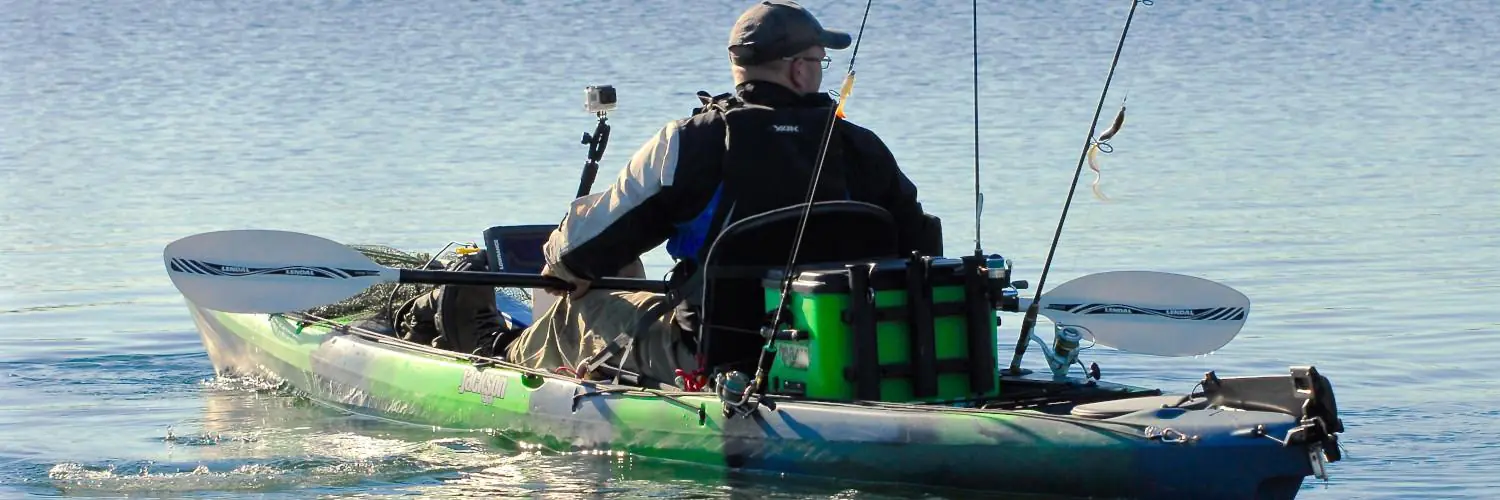Glacier National Park offers a unique and breathtaking kayaking experience amidst the rugged beauty of northwestern Montana. The park is home to a myriad of pristine lakes and clear, alpine waters that provide paddlers with both a peaceful retreat and an adventurous exploration. As kayakers glide across the surface of these waters, they are surrounded by the towering mountains and diverse wildlife that define the park’s landscape.
Lake McDonald, the largest lake in the park, is a well-known kayaking destination within Glacier National Park. Its crystal-clear waters mirror the surrounding peaks, and the shoreline is dotted with diverse flora and fauna. Paddlers can set off from Apgar Village, navigating along the gentle waves and exploring the secluded coves. Kayaking in Glacier National Park is not just about the physical activity; it’s an immersive experience that connects adventurers with the natural world in a profound way.
Table of Contents
Kayaking in Glacier National Park
Glacier National Park offers a serene kayaking experience with its crystal-clear lakes framed by stunning mountain views. Visitors find it crucial to adhere to park regulations for a safe and enjoyable adventure.
Why Kayak in Glacier National Park?
Kayakers are drawn to Glacier National Park for its tranquil waters and striking natural beauty. Key highlights include:
- Lake McDonald: The largest lake in the park, ideal for paddlers seeking both leisure and stunning views.
- Wildlife: While on the water, one may spot deer, elk, moose, or bears along the shores.
Kayaking allows visitors to intimately connect with the park’s pristine ecosystem, providing both peaceful solitude and the thrill of exploration.
Kayaking Rules and Regulations
Before embarking on a kayaking trip in Glacier National Park, individuals must understand and comply with specific rules and regulations to ensure safety and preservation of the park’s natural resources:
- Life Jackets: The use of a life jacket is mandatory for each person in a kayak.
- Permits: No permits are required for non-motorized watercraft, discouraging illegal or harmful activities.
- Safety Precautions: The cold waters necessitate appropriate clothing to safeguard against hypothermia.
| Item | Rule | Details |
|---|---|---|
| Life Jackets | Required for all kayak passengers | Helps prevent drowning incidents |
| Permits | Not required for non-motorized watercraft | Ensures free access to lakes |
| Water Safety | Awareness of cold water risks | Proper attire recommended |
Visitors must respect both the park’s rules and its fragile ecosystem while enjoying the exceptional kayaking it offers.
Kayak Rental Options
Visitors to Glacier National Park have a variety of kayak rental options that cater to different skill levels and preferences. Whether one seeks a serene paddle around Lake McDonald or a guided tour, the park and its surrounding areas offer a range of opportunities.
Apgar Village Rentals
In the quaint Apgar Village, kayak enthusiasts can conveniently find rentals right next to the beautiful Lake McDonald. Glacier Outfitters, centrally located in the village, provides various types of kayaks, including single, tandem, and triple models. They also offer stand-up paddleboards for those looking to try something different. Their rental options are flexible, providing equipment by the hour:
- Single Kayak: $15 per hour
- Tandem Kayak: $18 per hour
- Triple Kayak: Specific rates available upon inquiry
- Paddleboards: Rates vary
Local Outfitters and Tours
For visitors who prefer a structured experience, local outfitters provide guided kayak tours that combine the adventure of kayaking with informative commentary on the park’s ecology and geology. Several outfitters outside the park boundaries offer enhanced experiences, like specialized wildlife tours and sunset paddles. Rental rates and tour costs can differ among companies, so visitors should check with individual providers for the most current information. Outfitters often include all necessary gear, such as life jackets and paddles, to ensure a safe and enjoyable adventure on the water.
Premier Kayaking Destinations
Glacier National Park offers a diverse range of kayaking experiences, each distinct in its scenic beauty and tranquil waters. Paddlers can look forward to crystal clear waters and picturesque shorelines at these premier destinations.
Lake McDonald
Lake McDonald, the largest lake in the park, boasts pristine waters and stunning mountain reflections. Visitors can launch kayaks from Apgar Village to explore the lake’s myriad coves and its vibrant, colorful pebbles visible beneath the water’s surface.
Two Medicine Lake
Two Medicine Lake is celebrated for its scenic backdrop and tranquil waters, making it an excellent spot for kayakers seeking serenity. The area’s clear waters and quiet shoreline are ideal for both novice and experienced kayakers.
Bowman Lake and Kintla Lake
- Bowman Lake
- Secluded and serene, Bowman Lake is perfect for those looking to escape the crowds. This remote destination offers paddlers unmatched peace and the opportunity to connect with nature.
- Kintla Lake
- Near the Canadian border, Kintla Lake is an isolated haven for kayakers, free from motorized watercraft. Its still waters and untouched surroundings make it a prime destination for a quiet paddle.
St. Mary Lake
On the east side of the park, St. Mary Lake presents kayakers with clear waters framed by a dramatic mountain skyline. The lake’s extensive shoreline invites exploration of its many nooks and reveals stunning vistas at every turn.
Safety and Preparation
When kayaking in Glacier National Park, safety and preparation are key to ensuring a positive experience. Paddlers should be aware of and prepare for variable weather conditions, possible wildlife encounters, and carry essential gear for emergencies.
Understanding Weather Conditions
Weather in Glacier National Park can be unpredictable. Kayakers should always check the forecast before setting out and be prepared for changes. It is vital to understand that weather conditions can lead to hypothermia, so it’s crucial to pack and wear appropriate clothing. Items like a dry suit or wetsuit, and layers of synthetic or wool clothing can provide insulation, even when wet.
Wildlife Encounters and Bear Safety
Encounters with wildlife, including bears, are a possibility in the national park. Carrying bear spray and knowing how to use it is essential for safety. Kayakers should also be aware of their surroundings and make noise to alert animals to their presence. They must store food and scented items securely and never approach or feed wildlife.
What to Pack for Kayaking
For kayaking journeys in Glacier National Park, a meticulously packed dry bag can be a lifesaver. In it, one should include:
- Safety Gear: Personal flotation device (PFD), whistle, headlamp, and first-aid kit.
- Bear Spray: Accessible and ready for use.
- Clothing: Non-cotton layers, waterproof jacket, hat, gloves, and extra clothing.
- Navigation: Map, compass, and possibly a GPS device.
- Emergency Items: Fire-starting kit, knife, and signaling mirror.
Proper preparation for the weather, knowledge of wildlife safety, and essential gear can make all the difference in the kayaking experience at Glacier National Park.
Navigation and Accessibility
Glacier National Park offers a variety of access points and navigable waters for kayaking. Visitors must consider the park’s dynamic terrain, which ranges from its iconic Going-to-the-Sun Road to the more remote waterways accessible only by trails or less-traveled roads.
Access Points and Parking
- Apgar Village: The main hub for kayak rentals and information. Parking here provides easy access to Lake McDonald with ample space during most days.
- West Glacier: A gateway for Park visitors which offers additional services and parking options. It’s a good starting point for those looking to explore the park’s southwestern areas.
Visitors should plan to arrive early during peak season to secure parking as spots fill quickly. The Continental Divide also influences access, with certain areas being more difficult to reach due to terrain.
Navigating Around the Lakes
- Lake McDonald: The largest lake in the park, offering clear waters and stunning mountain reflections. Launch a kayak from Apgar Village and navigate through numerous coves.
- Going-to-the-Sun Road: Provides access to several lakes, though it’s worth noting that parking along this road is limited, especially at trailheads.
Visitors must respect park rules and the natural environment while on the water, keeping a safe distance from wildlife and practicing Leave No Trace principles. All watercraft must be inspected for invasive species before launching.
Environmental Protection Efforts
Glacier National Park has implemented specific strategies to combat environmental challenges that threaten its ecosystem. Key among these are the management of invasive species and the adherence to Leave No Trace principles.
Invasive Species Management
Park managers at Glacier National Park rigorously tackle the issue of invasive species to preserve the park’s natural balance. The two frontline defenses in this effort are inspection and tours:
- Inspection: Boats and recreational equipment undergo thorough inspections to prevent the introduction of aquatic invasive species. These procedures are designed to intercept potentially harmful organisms before they enter the park’s waterways.
- Tours: Educational tours emphasize the importance of monitoring and reporting sightings of invasive species. Trained guides explain the impact of nonnative species on local flora and fauna during these informative sessions.
Leave No Trace Principles
The park champions the Leave No Trace principles to minimize human impact on the environment:
- Plan and Prepare: Visitors are educated on how to properly plan their kayaking trips, ensuring minimal impact on the park.
- Dispose of Waste Properly: Proper disposal of waste is enforced to maintain the park’s pristine condition.
- Respect Wildlife: Guidelines are provided to ensure a safe distance from wildlife during kayaking excursions.
- Leave What You Find: Removing rocks, plants, or historical artifacts while kayaking is strictly prohibited.
These structured efforts reflect Glacier National Park’s dedication to environmental stewardship and long-term sustainability.
Combining Kayaking with Other Activities
Glacier National Park offers a unique blend of kayaking adventures that can be seamlessly integrated with other outdoor activities such as hiking, camping, and fishing. Visitors have the opportunity to experience the park’s natural beauty from both water and land.
Hiking and Camping Opportunities
Kayakers can access remote hiking trails and campgrounds by paddling across the park’s pristine lakes. After docking their kayaks, they can embark on hikes through lush forests and rugged terrain. For example, a journey across Lake McDonald might lead one to trailheads that offer a day’s hike or a gateway to backcountry camping spots. Campgrounds near the lakes provide convenient places to stay overnight, surrounded by the natural sounds and serene environment of the park.
Fishing Along the Lakes
While kayaking in the park’s waters, anglers often take advantage of the opportunity to fish in the crisp, clear glacial lakes. Lake McDonald and Lake Five, both accessible by kayak, are prime spots for fishing. They can cast their lines for native fish species as they enjoy the stillness of the lake, with the proper permits. It’s important to follow park regulations to preserve the ecosystem, ensuring that fishing remains a sustainable activity within Glacier National Park.
Planning Your Kayaking Adventure
When setting out on a kayaking adventure in Glacier National Park, visitors must consider their itinerary and accommodations beforehand. Addressing these logistical details ensures a more seamless and enjoyable experience.
Itinerary Suggestions
The traveler’s itinerary should be tailored to their experience level and interests. A popular starting spot is Lake McDonald, the park’s largest lake, offering exquisite views and clear waters ideal for kayaking. For those seeking a remote ambiance, Polebridge, located near the North Fork of the Flathead River, offers access to serene and less frequented waters. Adventurers may also explore the Middle Fork and North Fork of the Flathead River for challenging paddling opportunities.
Many Glacier is another must-visit area for any itinerary. Its dramatic landscapes present kayakers with awe-inspiring backdrops. Visitors can embark on guided kayak tours here, which provide a deeper understanding of the park’s ecosystem and history.
Booking Campgrounds and Tours
To ensure a place to stay, campers should book campgrounds in advance, particularly if they aim to stay at popular spots like Apgar, near Lake McDonald, or the more secluded backcountry sites accessible only by water.
For guided tours, visitors must book with authorized companies. Options include:
- Day kayaking: For those preferring shorter excursions, various authorized companies offer daily tours.
- Guided overnight trips: For the more intrepid paddlers, overnight kayak adventures can be booked.
| Booking Type | Contact Information | Notes |
|---|---|---|
| Day Kayaking | Glacier Bay Sea Kayaks | Advance reservations recommended as tour boat capacity is limited. |
| Overnight Kayak Trips | Glacier National Park Visitor Services Directory | Contact authorized providers listed in the directory. |
Rentals are available in Apgar Village, which provides various kayak options, including single, tandem, and triple kayaks, as well as stand-up paddleboards.

